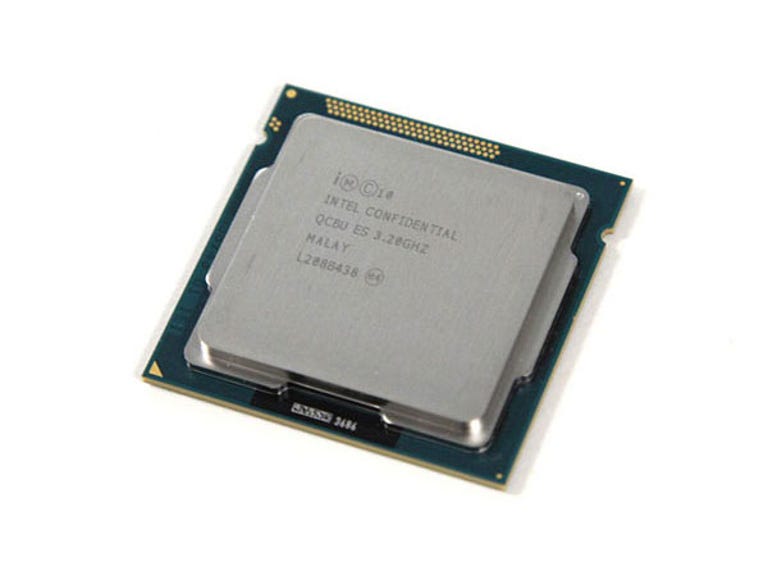 Why You Can Trust CNET
Why You Can Trust CNET Intel Core i5 3470 review: Intel Core i5 3470
While the i5 3470 will give system integrators some wiggle room on price, we're fans of sticking to the i5 3570K for everyone else.
Here's a mainstream part for you: Intel's third generation Core i5 3470. Clocked at 3.2GHz, it has a max turbo boost of 3.6GHz. Unlike the Core i7 parts, the i5 lacks HyperThreading, making this a quad core, quad thread part.
The Good
The Bad
The Bottom Line
We've already covered Ivy Bridge's major architectural differences in the i7 3770K review, where we discovered that Intel's HD 4000 graphics didn't bring us much, in terms of gaming. It did manage to bring Batman: Arkham Asylum and Skyrim scraping across the line at their very lowest settings, but its major contribution was introducing a baseline of DirectX 11 across the industry, and its improved QuickSync encoding.
And, so, we won't be benchmarking the 3470 as far as games are concerned, as its cut down HD 2500 Graphics certainly won't be capable.
The 2500 is basically a 4000, with less execution units: six compared to 16. While definitely not a gaming chip, where we're likely to see relevant differences is on the QuickSync front, with CyberLink's MediaEspresso managing a nine minute 55 second XviD to H.264 conversion in one minute and seven seconds, compared to the i7 3770K's 59 seconds. Given a longer video, the difference would no doubt be more pronounced.
Our CPU-reliant benchmarks see the expected performance differences between the top-of-the-line i7 3770K and the mid-range 3470.
Application performance
Choose a benchmark: Handbrake | iTunes | Photoshop | Multimedia | Cinebench Multi
Handbrake and Cinebench benefit the most, by having a higher clock speed and more threads available. Photoshop and iTunes — not so much; the Photoshop result is the most interesting, even if it is within margin of error — it shows that there's some other bottleneck in the system, other than threads and pure clock speed. We're running a SandForce-based SSD as our test hard drive, so perhaps the memory subsystem is the hold-up. For the most part, though, it emphasises that mid-range CPUs will be plenty fine for a large amount of the populace.
Verdict
While the i5 3470 will give system integrators some wiggle room on price, we're fans of sticking to the i5 3570K for everyone else. It simply gives the most flexibility, with extra clock speed, overclocking capability, and the bumped up HD 4000 Graphics gives QuickSync a nice boost. Above all, in the retail market, there's now very little difference in price — so you may as well get the higher binned chip.


